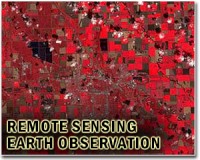 |
Champaign IL (SPX) Apr 25, 2011 Coastal residents and oil-rig workers may soon have longer warning when a storm headed in their direction is becoming a hurricane, thanks to a University of Illinois study demonstrating how to use existing satellites to monitor tropical storm dynamics and predict sudden surges in strength. "It's a really critical piece of information that's really going to help society in coastal areas, not only in the U.S., but also globally," said atmospheric sciences professor Stephen Nesbitt. Nesbitt and graduate student Daniel Harnos published their findings in the journal Geophysical Research Letters. Meteorologists have seen large advances in forecasting technology to track the potential path of tropical storms and hurricanes, but they've had little success in predicting storm intensity. One of the biggest forecast problems facing the tropical meteorology community is determining rapid intensification, when storms suddenly transform into much stronger cyclones or hurricanes. "Rapid intensification means a moderate-strength tropical storm, something that may affect a region but not have a severe impact, blowing up in less than 24 hours to a category 2 or 3 hurricane," Harnos said. "This big, strong storm appears that wasn't anticipated, and the effects are going to be very negative. If you don't have the evacuations in place, people can't prepare for something of the magnitude that's going to come ashore." For example, Hurricane Charlie, which hit southern Florida in 2004, was initially forecast as a category 1 storm. However, when it made landfall less than 24 hours later, it had strengthened to a category 4, causing major damage. Rapid intensification is so hard to predict in part because it's driven by internal processes within the storm system, rather than the better-predicted, large-scale winds that determine the direction of the storms. The satellite imagery most commonly used for meteorology only looks at the clouds at the top of the storms, giving little insight as to what's going on inside the system. Harnos and Nesbitt focused their study on passive microwave satellite imagery. Such satellites are used commonly for estimating precipitation, surface temperature and other data. The Illinois researchers were the first to use them systematically to observe hurricane structure and intensity changes. "What makes it ideal for what we are doing is that it's transparent to clouds. It senses the amount of ice within the clouds, which tells us the strength of convection or the overturn of the atmosphere within the hurricane," Nesbitt said. "It's somewhat like trying to diagnose somebody with a broken arm by taking a picture of the arm, versus being able to X-ray it." The researchers scoured data from passive microwave satellites from 1987 to 2008 to see how hurricanes behaved in the 24 hours before a storm underwent rapid intensification. Such a big-picture approach, in contrast to the case studies atmospheric scientists often perform, revealed clear patterns in storm dynamics. They found that, consistently, low-shear storm systems formed a symmetrical ring of thunderstorms around the center of the system about six hours before intensification began. As the system strengthened into a hurricane, the thunderstorms deepened and the ring became even more well-defined. The study also looked at high-shear storms, a less common phenomenon involving atmospheric winds hanging with height. Such storms showed a different structure when intensifying: They form a large, bull's-eye thunderstorm in the center of the system, rather than a ring around the center. "Now we have an observational tool that uses existing data that can set off a red flag for forecasters, so that when they see this convective ring feature, there's a high probability that a storm may undergo rapid intensification," Nesbitt said. "This is really the first way that we can do this in real time rather than guessing with models or statistical predictions." Since passive microwave satellites orbit every three to six hours, meteorologists can use them to track tropical storms and watch for the telltale rings to give forecasters about a 30-hour window before a storm hits its maximum strength. Next, the researchers hope to even further increase their forecasting ability by modeling the internal dynamics of the storm systems as they intensify to pinpoint the causes of the structural changes they observed and find out what drives the intensification process. "The satellite gives up as snapshot of what's taking place," Harnos said. "We know what's going on, but not how those changes are occurring to end up in the pattern that we're seeing. So what we're working on now is some computer modeling of hurricanes, both real storms and idealized storms, to see dynamically, structurally, what's taking place and what changes are occurring to produce these patterns that we see in the satellite data." Read the paper, "Convective Structure in Rapidly Intensifying Tropical Cyclones as Depicted by Passive Microwave Measurements,".
Share This Article With Planet Earth
Related Links Physical Science at Illinois Earth Observation News - Suppiliers, Technology and Application
 Belgium probes Google's Street View
Belgium probes Google's Street ViewBrussels (AFP) April 21, 2011 Belgium became Thursday the latest European country to investigate Google's Street View picture map after cars taking pictures for the programme collected private data. "We have received a complaint from the privacy protection committee and we have opened an investigation," federal prosecutor's spokesman Eric Van der Sijpt told AFP. A commission official told the Flemish newspaper De Mor ... read more |
|
| The content herein, unless otherwise known to be public domain, are Copyright 1995-2010 - SpaceDaily. AFP and UPI Wire Stories are copyright Agence France-Presse and United Press International. ESA Portal Reports are copyright European Space Agency. All NASA sourced material is public domain. Additional copyrights may apply in whole or part to other bona fide parties. Advertising does not imply endorsement,agreement or approval of any opinions, statements or information provided by SpaceDaily on any Web page published or hosted by SpaceDaily. Privacy Statement |